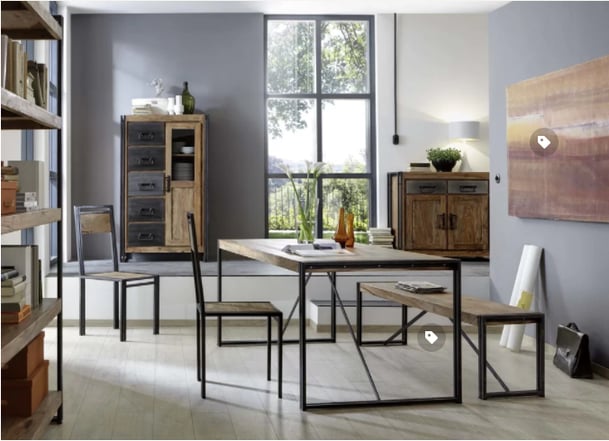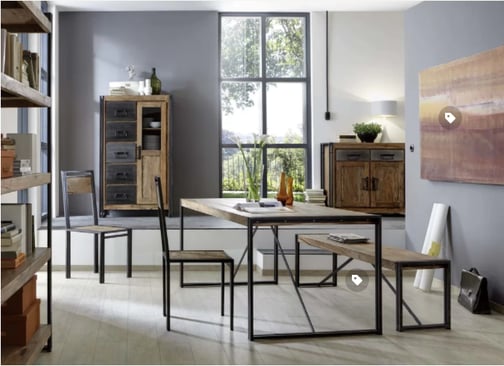In a recent conversation, Marion Thomas, whose most recent role is director of Global Site Merchandising at Wayfair, shared best practices for stronger supplier-retailer relationships and valuable recommendations for effectively marketing high price-point products online.

A portion of the Q&A was published this week in Marketing Land, below are some of the highlights and additional insights.
What are some of the common pitfalls you’ve seen in relationships between suppliers and retailer?
A bad relationship on the supplier side usually originates by just focusing on price. No party gets good results if you just look at your financials, what your spreadsheets tell you, and then try to optimize for profit margin without really understanding what drives sales up or down, or returns. Part of a winning relationship is using the insights generated on both sides.
To that point, the retailer needs to understand what the customer goes through. What does the customer journey look like? What are the questions they have when they call sales and service? Why do they return a product? Are they satisfied?
Then, they need to funnel that information back to the supplier so they can use that insight to improve their next product line, improve their existing merchandising and make the product experience better.
How do suppliers and retailers build better relationship with customers?
What's going to create that good relationship between the supplier and the retailer and ultimately the customer is to sell each product for what for what it is. Because if you oversell your product and you make it like it's a high-end nightstand but it is made out of particle board, when the customer gets it they're going to be disappointed. But if they understand that they're getting kind of a good quality for the right price upfront, they can be very satisfied with that same piece of furniture. So how you set expectation, because the customer cannot see it or touch it, is very important.
That makes sense. In your opinion, what are some of the components of a winning product page online?
There's not a magic formula that you can apply to every single product. There are some high-end products that you're not going to need that much content to sell. If it's highly branded, highly recognized, you want help with the features but shoppers may know the brand already and have searched directly for it. I think you need to understand who your customers are, what are the different types of journey that your customers are going to go through, what is it that is driving their need for that product? Are they looking for something immediately, or is it something that's part of a remodel or moving? What's their timeframe, what is the reason for their purchase, and also what's important for them? Is it quality? Is it style? Is it durability? As a supplier, you must address all of these questions from your customers with the right type of content on all of the different retailer websites.
The story you tell should meet the need of a specific customer. And the content that you provide creates trust with the customer. The Internet makes it much easier for people to research for lower prices if they want to. Before, consumers were going to different stores, and talking to different sales people, who are hiring designers, so the research part is not new, but it’s become easier and faster that ever before to find information. But also, it's harder for all information to be credible. That's why it's really important for the supplier to create content that truly represents the product and that doesn't oversell, or break that relationship.
Do you have suggestions about images and other rich media suppliers should invest in?
Everybody's got images of their product, but not everybody's got the right type of images. When you think about furniture for example, you want it in a way that you're going to be able to see the product by itself but also you need to see it in an environment. Potentially the environment shots need to include different styles, especially if it is a piece of furniture that could fit in a traditional or a modern style. You want it stylized in different ways so that people can picture it in their house.
In addition, I think suppliers needs to invest in videos to help answer specific customer questions. There are things that you cannot do with just pictures. For example if you have a mechanism, something that you need to see in action, you need to develop video for that. But avoid doing video for videos sake. Because you're asking your visitor for a time commitment to watch the video. If they sit there, whether it is for 15 seconds or 2 minutes, and watch something that they could have got themselves by just glancing at the page for 2 seconds, you just wasted their time.
Time is precious, especially for online shopper. Think how long your video is and how focused it is on solving for a specific customer need. That's what I think makes the difference between good video and bad video.
Written by: Andrew Waber
Recent Posts
8 Quick Tips for Performance-Driving SEO for Product Pages
10 Brand Examples of Click-Driving Product Images, Videos, and More To Inspire
Summit Spotlight: Salsify Leaders Share How To Advance to the Next Decade of the Digital Shelf
Subscribe to the Below the Fold Newsletter
Standing out on the digital shelf starts with access to the latest industry content. Subscribe to Below the Fold, our monthly content newsletter, and join other commerce leaders.


